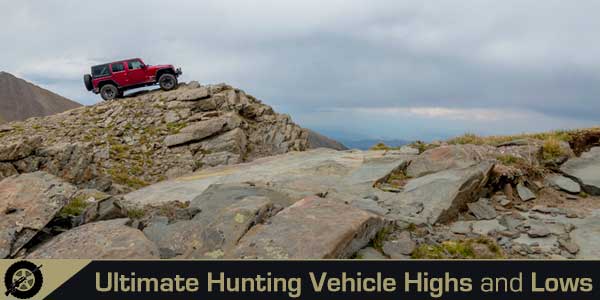 I hope you’re enjoying following our Ultimate Hunting Vehicle series and are inspired to build your own. We’ve enjoyed hearing back from some of you who have implemented various parts of our build for yourselves. You may recall that it all started with some big changes to our 2012 Rubicon in Part 1. We cut off the factory suspension and installed a Teraflex long arm kit. We added an overhead gun rack that you can get for Jeeps and other vehicles, a winch for both vehicle and game recovery, and then to more easily take advantage of the Jeep’s modularity, we got set up with a lift to remove the top and wall mounted door storage in Part 4.
I hope you’re enjoying following our Ultimate Hunting Vehicle series and are inspired to build your own. We’ve enjoyed hearing back from some of you who have implemented various parts of our build for yourselves. You may recall that it all started with some big changes to our 2012 Rubicon in Part 1. We cut off the factory suspension and installed a Teraflex long arm kit. We added an overhead gun rack that you can get for Jeeps and other vehicles, a winch for both vehicle and game recovery, and then to more easily take advantage of the Jeep’s modularity, we got set up with a lift to remove the top and wall mounted door storage in Part 4.
That last part was decidedly Jeep focused and illustrates why we chose the JKU to build into the Ultimate Hunting Vehicle. But here in Part 5 we’ll introduce you to keys and concepts you can apply to most anything you build into your own UHV.
Air Essentials
Whether your UHV is a Jeep, a truck or a buggy with balloon tires, at least one of the three things we cover in this story should go on your shopping list. You never know when you’ll be called upon to give a helping hand to another hunter. But we’ll get back to that in a minute. Let’s talk air for a moment, not the kind of hot air spouted at hunting camps around the globe but the kind that keeps you and your Ultimate Hunting Vehicle going.
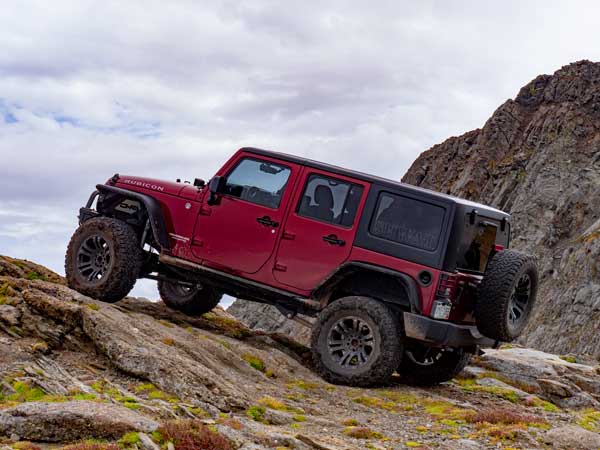 Unless you’ve scored some prototype Mars Rover style tires, your UHV and ours sits on rubber tires full of air. When the going rough, too much air pressure in your times and you break things on your Jeep. Ask me how I know… A puncture can really ruin your day and make getting home a lot more challenging. So something you might not have given much thought to can really impact your experience, your safety and your wallet.
Unless you’ve scored some prototype Mars Rover style tires, your UHV and ours sits on rubber tires full of air. When the going rough, too much air pressure in your times and you break things on your Jeep. Ask me how I know… A puncture can really ruin your day and make getting home a lot more challenging. So something you might not have given much thought to can really impact your experience, your safety and your wallet.
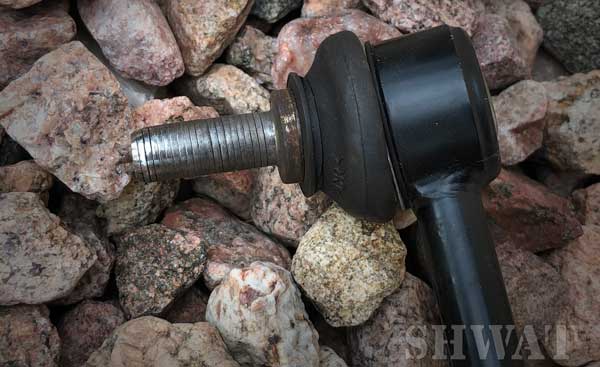
A few months ago I drove into the mountains to scope out an area. I drove up a fire road and back, one that is the single most wash-boarded road I’ve ever been on. My long arm suspension does wonders for the ride but my E rated KO2 35×12.50×18 tires aren’t really ideal for this at my normal road pressures (32 PSI). In fact, they are brutal, delivering a beating to both the jeep and me. The result was a stripped sway bar disconnector bolt, not a road safe situation. Teraflex warrantied the part, but the bottom line is that I screwed up.
Deflated Is Actually A Good Feeling
I shouldn’t have. I know the value of deflating big tires before hitting the rough stuff. But it’s always been as much fun as minor toe nail surgery. It’s tedious… Use a key, backside of the pressure gauge, whatever… Press into valve stem for x amount of time, stop, check pressure, repeat. Repeat. Repeat.
Eventually the pressure drops to something I’m confident is good, but hopefully I don’t overshoot and end up with too little pressure. If that happens, I’d better be at a gas station in the middle of nowhere to put air back in the tire. Like I said, tedious. I’ve looked at tire deflators but never bought because sometimes I’m just slow like that. Don’t tell anyone.
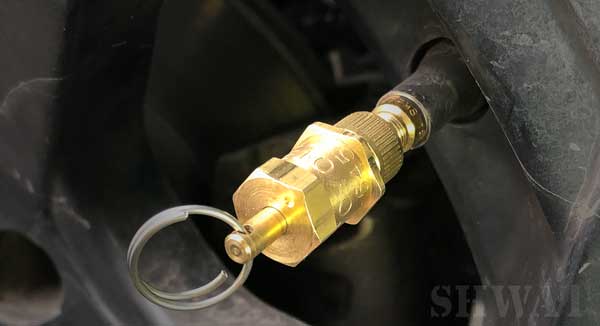
Anyway, when our friends at Extreme Terrain offered me a set of deflators to experiment with I was pumped. I decided to take these with me on a recent scouting trip to the Colorado High Country. Picture a 9.6 mile rock road winding up the mountains. It starts at 8,674 feet and reaches a pass above tree line at 13,047 feet.
Most of the surface is rocks about the size of common house bricks and cinder blocks. It’s not an obstacle laden rock crawling Jeep adventurer’s playground, it’s the path to the high country where the deer and elk play. Failing to drop some pressure from my tires would have made the drive brutal.
I threaded the deflators on each valve stem and within a little more than five minutes, each tire’s pressure was around 15 PSI. I ate a quick snack while waiting. I’m feeling like a big dog now, why didn’t I just shell out the $30-90 bucks for deflators like these sooner?
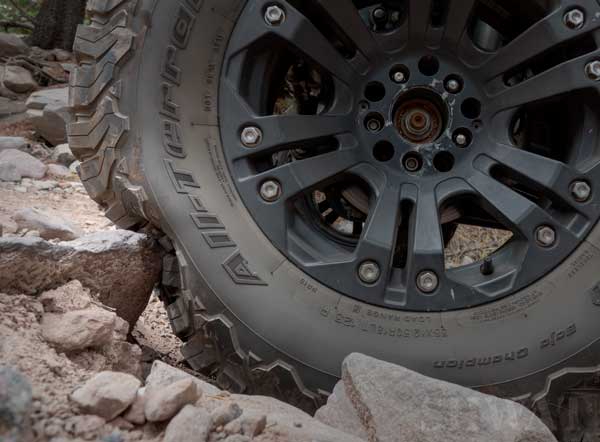 At lower pressures my tires conform to the rocks instead of bouncing the UHV off. They have more surface area on the rocks so we have much better grip, better control. I wonder about the chance of getting a flat, but Extreme Terrain also provided a $40 ARB Speedy Seal Tire Repair Kit. It’s all good as we head up.
At lower pressures my tires conform to the rocks instead of bouncing the UHV off. They have more surface area on the rocks so we have much better grip, better control. I wonder about the chance of getting a flat, but Extreme Terrain also provided a $40 ARB Speedy Seal Tire Repair Kit. It’s all good as we head up.
Flats Are No Fun
We were not exactly alone on this trip. There are hunters on ATVs, UTVs and buggies of various iterations. It’s a camo and binos kind of day in the mountains. We stopped and talked with some of these hunters. One had spotted some Elk earlier in the day. One had spotted deer. And one couple had nasty flat on their buggy and couldn’t use the spare tire thanks to a lug nut mismatch.
Happily, our Ultimate Hunting Vehicle is now equipped with the ARB Speedy repair kit and the Mean Mother Air Compressor Extreme Terrain also sent! We didn’t time the repair, but I’m sure it was under five minutes.
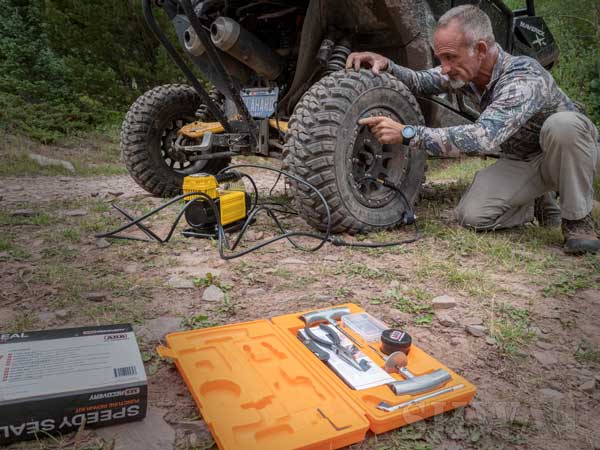 We simply aired the tire up enough to put some rocks under the axel. As soon as we pulled the compressor off the tire deflated.
We simply aired the tire up enough to put some rocks under the axel. As soon as we pulled the compressor off the tire deflated.
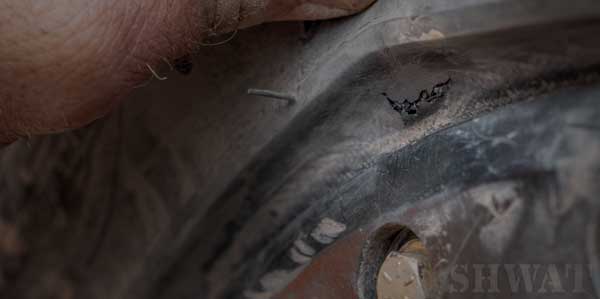
The cut was sizable, there was no need to ream it out though the kit includes a reamer. We threaded a plug from the ARB tire repair kit into the eye of the plug tool and pushed it into the tire.
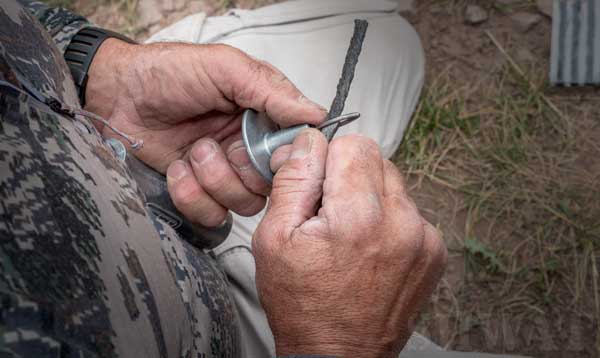 A fraction of a second later we pulled the tool and plug remained. Easy! A small amount of air continued leaking. So we grabbed second plug, inserted it into the tire and it worked!
A fraction of a second later we pulled the tool and plug remained. Easy! A small amount of air continued leaking. So we grabbed second plug, inserted it into the tire and it worked!
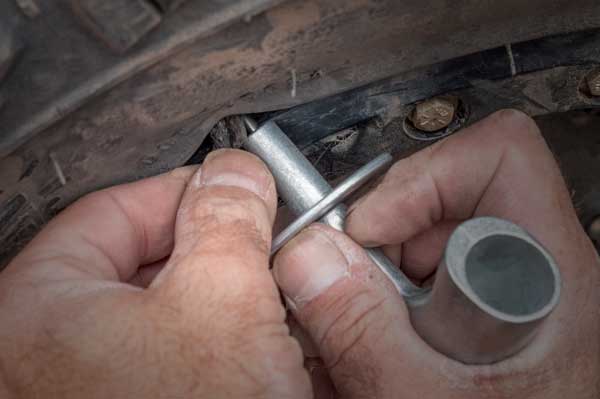 The kit comes in a nice hard plastic case, include a pressure gauge, pliers, 30 plugs (hope I never need all those!) and valve stem replacement parts and tools. Happily, we didn’t need any of that, but no doubt it’s good to have. We added air and the buggy was on its way!
The kit comes in a nice hard plastic case, include a pressure gauge, pliers, 30 plugs (hope I never need all those!) and valve stem replacement parts and tools. Happily, we didn’t need any of that, but no doubt it’s good to have. We added air and the buggy was on its way!
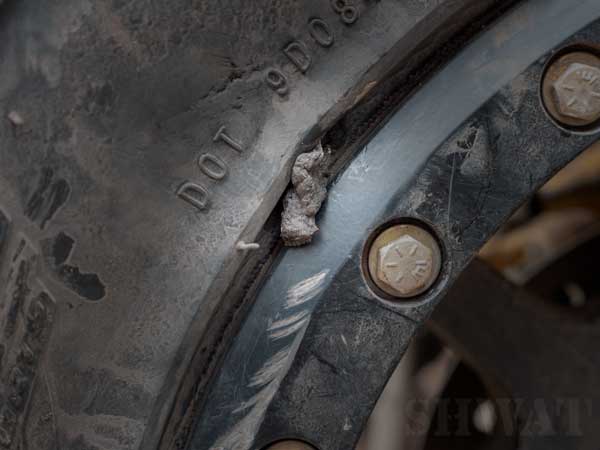 The hunter proclaimed he was going to buy 5 of these kits when he got home! We made some new friends and helped some hunters in need. We hadn’t spotted any animals but it was already a good day!
The hunter proclaimed he was going to buy 5 of these kits when he got home! We made some new friends and helped some hunters in need. We hadn’t spotted any animals but it was already a good day!
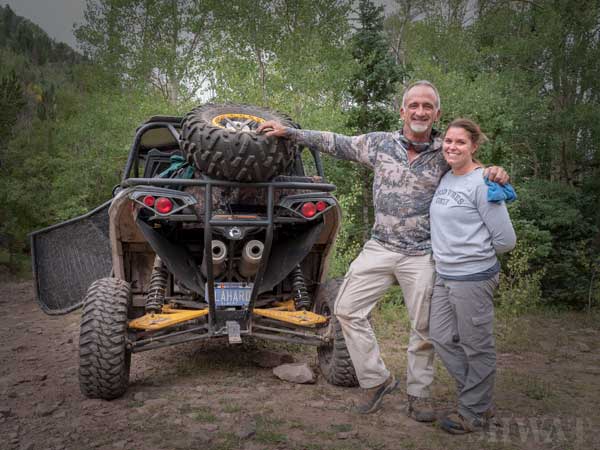
Higher we drove, and as we started getting close to tree line we spotted a doe and her fawns. They and some chipmunks would be all the wildlife we’d see.
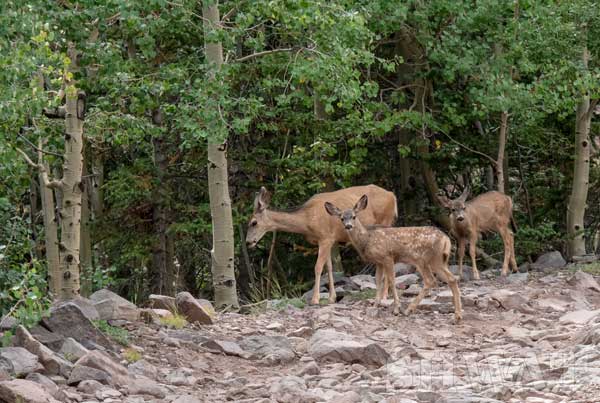
Getting Home
We kept driving to the pass summit to take in the views and enjoy the adventure. That was always part of the plan for the Ultimate Hunting Vehicle, to drive to the destination, maximize our capabilities at the destination and get back home safely. No trailers, no fuss. Just get in and go, then go home.
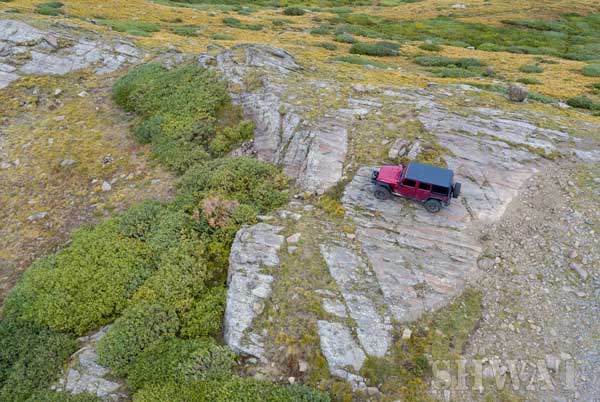
To go home we’d need to put air back in the tires. It wouldn’t be safe to hit highway speeds with the lowered PSI. In the past that too has been an issue for me. I’d have to find a gas station nearby that had air, put in the coins (did I remember to bring the coins?), stand around waiting forever for the tires to fill. And by “forever” I mean something close to that.
The average gas station air compressor puts out around 30-34 liters of air per minute. Hold that thought. Alternatively, in years past I purchased a couple of Walmart grade air compressors. In retrospect, they were never meant to air up my large tires. They would also take forever with max airflows of maybe 60 liters per minute before they got too hot to function.
Compare those options to the 160 liters per minute Mean Mother air compressor.
It took right at fifteen minutes to go from about 15 PSI to 32 PSI including taking pictures and of course the obligatory snack. Like other compressors, the Mean Mother’s built in pressure gauge indicates a higher pressure when running than when stopped, so you have to pause to see where you are in the inflation process.
I suspect with more use I’ll get a solid feel for that and total inflation time will drop with fewer pauses to check actual pressure. Pausing, however, is a piece of cake as the Mean Mother air compressor comes with a wireless remote control! They even put a magnet on the remote so people like me won’t lose it. Just drop it on the compressor base and forget it. It’s not going anywhere.
At $180, it’s not the cheapest Walmart version, but let’s do the math. I’ve bought a couple of those for maybe $30 each. That didn’t work out very well, so if I’d known what I know now I wouldn’t hesitate to jump on the higher quality better functioning remote controlled one from Extreme Terrain. That was a mouthful to type.
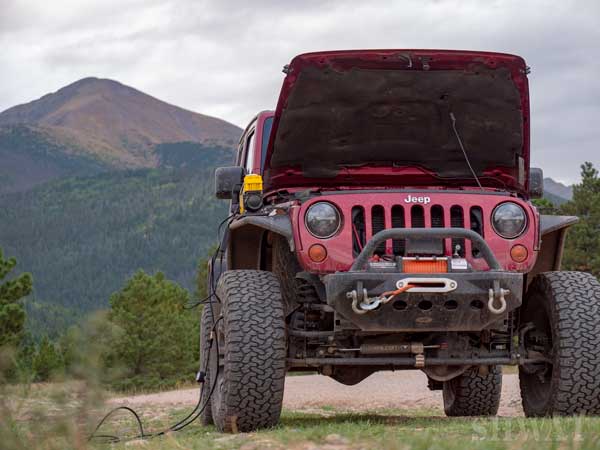
Final Thoughts
So that’s my story of exploring the highs and lows of air pressure changes to keep the Ultimate Hunting Vehicle rocking regardless of the terrain. None of the tools covered in this story are expensive and each is a game changer. When it comes to putting the “Ultimate” label on your hunting vehicle, these might not be the first things that come mind, but you probably don’t want to overlook them.

